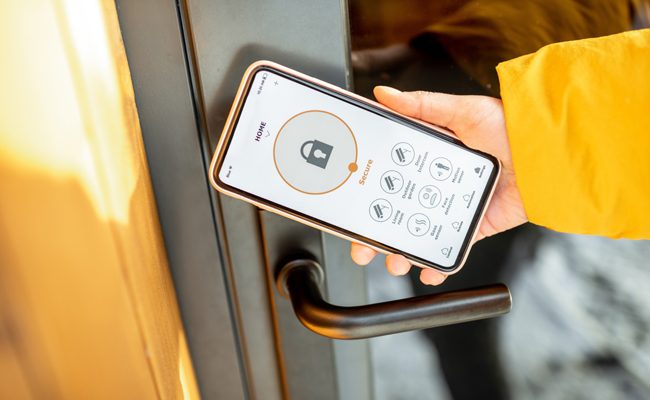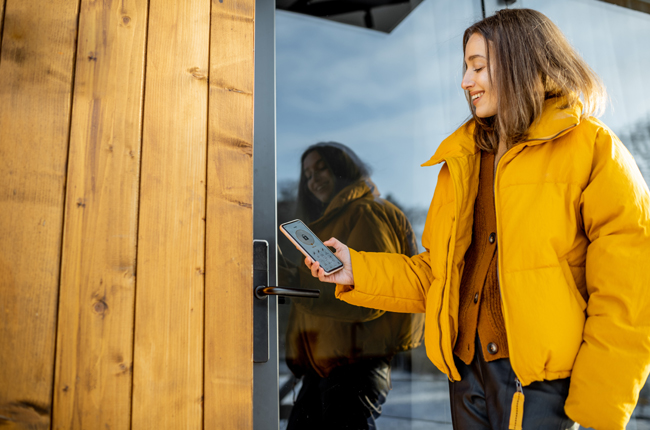
Smart homes are becoming more popular and accessible. With recent advancements in technology and more brands entering the smart home industry, it’s never been easier to make an automated and smarter home.
One of the prime candidates for a smart upgrade is your door lock. After all, you lock and unlock your door every day—so, a smart lock makes sense. If you choose to smarten up your door lock, you’ll be able to come in just with your voice or lock it remotely from your smartphone when you forget.
However, upgrading your locks is not as straightforward as it seems. This article will provide you with all the necessary information you’ll need about smart locks before installing them.
Smart Locks: What Are They?
Smart Lock is a broad term that covers various devices.
Basically, it’s an electrically powered lock that can operate wirelessly. If you’ve recently checked into a hotel in the past few years, you’ve probably used a smart lock.
Smart locks are operated in several ways including a code, a keycard, a smartphone app, your biometrics, a home assistant, or a combination of these things.
Also, these smart locks don’t have to go to your front door only. They can replace just about any regular door lock in your home. It’s also available in different forms, such as padlocks, deadbolts, and even drawer locks like Ojmar Intelligent Locks.
Things To Know Before Buying Smart Locks

- Inspect Your Door
As mentioned before, there are various smart locks available today. However, you should make sure that your door is compatible with the requirements needed by the smart lock that you prefer.
If your doors are slightly misaligned and require you to push your door every time to lock them, then it’s high time to fix it before installing a smart lock. It’s because accessing your smart lock remotely will be pointless if it would still require human intervention to make it work.
Also, if the bolt doesn’t reach the door jamb, that’s another issue. A smart lock requires that the bolt is fully extended. If your door jamb wasn’t customized with the proper measurement to accommodate the bolt, eventually it can damage your door and might risk burning out the motor on your smart lock.
Fortunately, both issues can be fixed with the right tools and a bit of elbow grease. Simpler issues such as a misaligned door can be easily fixed by tightening a few screws in the hinge. However, more complex issues are best left to the professionals.
Either way, you need to know the condition of your door before upgrading its lock. The last thing you want is to buy an expensive smart lock and realize that it doesn’t function properly because of some complications in your door structure.
- Understanding The Different Smart Features
Different smart locks have different features. It also has a variety of options in terms of its locking mechanism and automation. Here are some common features to look for:
- Remote Control
This is the most basic feature. It allows you to control the smart lock from anywhere via the internet and can be accessed remotely with a smartphone app.
- Smart Platform Integrations
If you have a smart home, then you can choose a smart lock that’s compatible with your specific voice assistant. A smart lock should work seamlessly and trigger your existing Internet of Things (IoT) devices.
- Tamper Alarm
Smart locks, like traditional locks, are still vulnerable to brute force. Thus, the best smart locks feature a tamper alarm that notifies you if your entry point is under physical attack. Most smart locks even have loud alarms when an intruder tries to tamper with them.
- Schedules
Scheduling or user-based permissions are also a nice feature of smart locks. It eliminates the need for spare keys for visitors and family members while providing you with tighter control over who has access to your home.
It allows you to grant access to certain people at specific times of the day. This is a good feature for kids who come home alone after school.
- Geofencing
With this feature, you can lock and unlock your home based on your phone’s GPS. For instance, your smart lock will automatically unlock when it senses that you’re nearby and vice versa.
Some locks use it in combination with Bluetooth authentication technology to provide more security.
- Voice Activation
Smart locks are now offering voice activation technology. This feature will allow you to lock and unlock your home with a simple audio command. Additionally, other systems will also require you to say your PIN code for an extra level of security.
- Auto-Lock
Most smart locks automatically lock the door when you leave your home. This way, you never have to wonder if you left the door unlocked.
- There Are Drawbacks
As with any new product, there will always be some drawbacks. Switching to smart locks from a regular deadbolt is a modern technology upgrade that many people are aiming for because of its convenience and efficiency. Although most smart locks do offer security features such as auto-lock or tamper alarm, they may still be considered a risk.
Always keep in mind that you may be risking your home security when you switch to smart locks because digital advancements may be making our lives convenient, but they may also make us vulnerable to hackers and cybercriminals who can easily bypass the device.
Another disadvantage is that it relies on your phone and internet connection, if you lose your phone or a power outage happens, you might be at risk of being locked out of your house. Likewise, you need to be wary of the battery life because if it dies before you’re able to change it, that would be another problem to face.
Take Away
Smart locks have come a long way in the past few years. What was once exclusive to expensive hotels and tech geeks has now become more accessible to buy, install, and use.
While smart locks can provide you with a great deal of convenience when entering and leaving your home, make sure to consider the valuable information mentioned above before installing one on your own door.
Leave a Reply